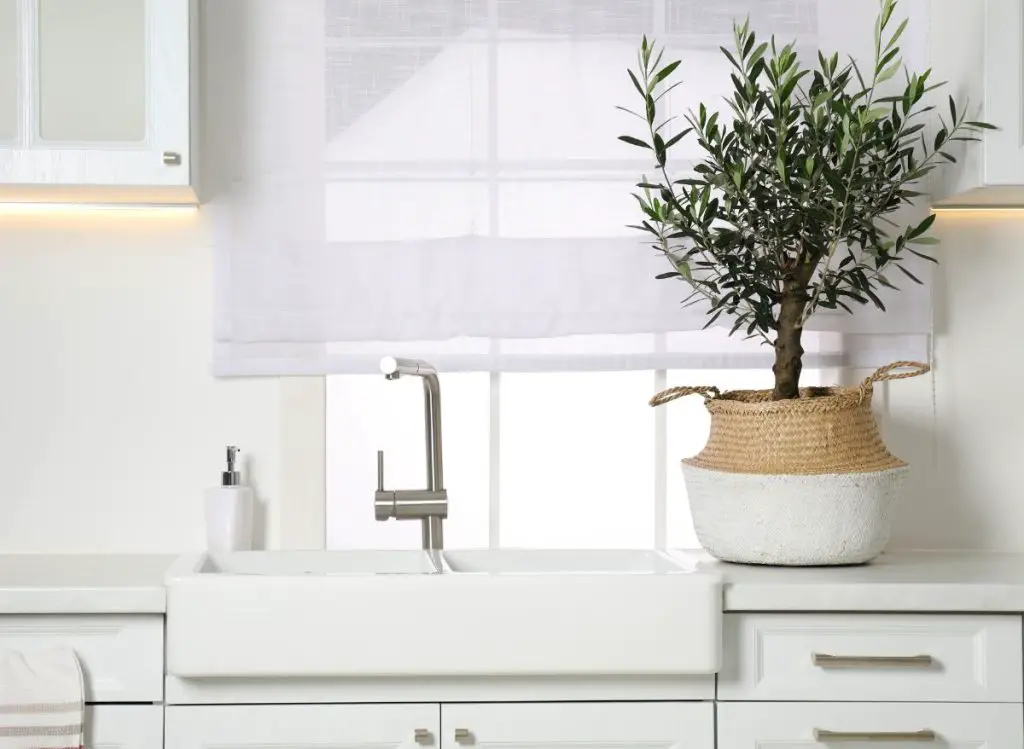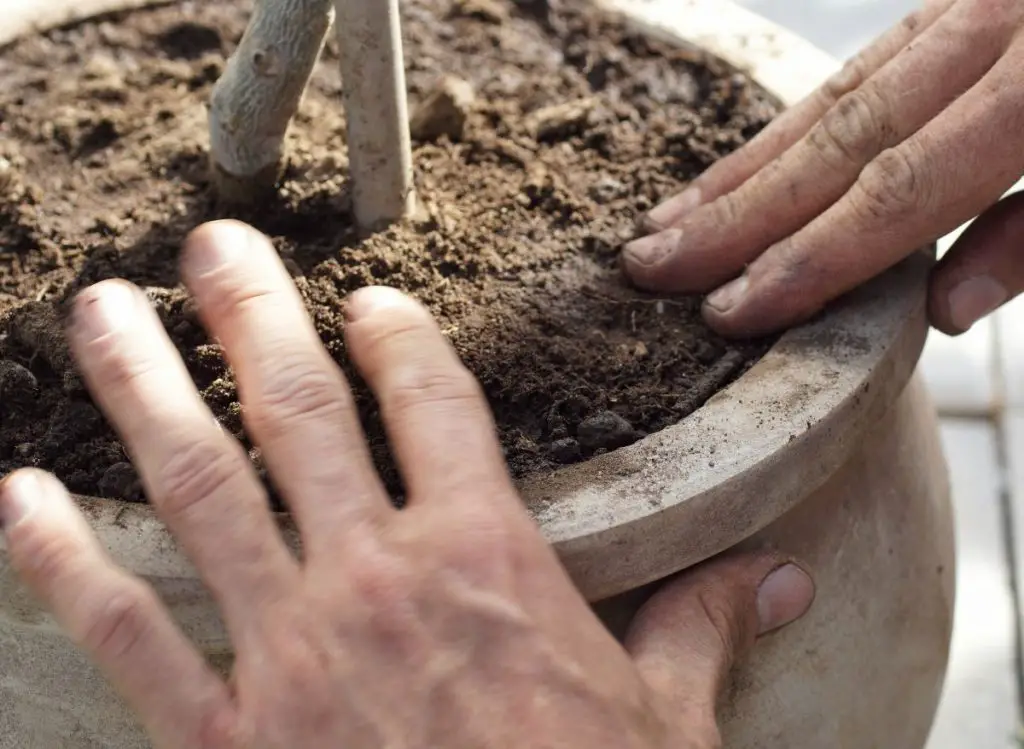
Olive trees are one of the most popular fruit trees worldwide, but they are not commonly grown indoors. Growing an olive tree indoors might seem challenging, but it’s not impossible.
So, can you grow an olive tree indoors? In general, an olive tree can be grown indoors near or against a south-facing sunny window or wall and freeze out in a hard winter (Source: University of Washington). Light is the limiting factor for indoor growth of plants, which means artificial light or sunlight that comes through a window. Generally speaking, olive trees grow naturally outdoors in full sun.
If you are considering growing your own indoor olive tree, then this is the blog post for you. Keep reading to explore how to successfully grow olive trees indoors, from choosing the right variety of trees to feeding and watering them.
Olive Trees’ Characteristics
The olive trees, scientifically called Olea europaea, are native to Africa, Asia, and the Mediterranean (Source: University of Florida). Olive trees typically grow at most 30 feet (9.14 meters), though varieties in a container may only reach a fifth of that size. For example, Black Olive Tree can grow 50 feet (15.24 meters) tall when mature.
Moreover, olive trees are actually quite popular as indoor plants as they can grow in small spaces, and their leaves and fruits provide a lovely aroma. However, it’s important to keep in mind that olive trees are slow-growing and can take a while to become mature.
It can take as long as five years before they start producing fruits. Also, they require sufficient sunlight, adequate drainage, potting soil that doesn’t retain too much moisture, and a good-sized pot.
The table below contains olive tree general characteristics:
| Scientific Name | Olea europaea |
| Common name | – Common olive – Sweet Oil Plant – European Olive – Lady’s Oil |
| Mature Size | – Height: 20 to 30 feet (6.1 to 9.14 meters) – Width: 15 to 25 feet (4.6 to 7.62 meters) |
| Growth Rate | Slow |
| Light Requirements | Olive trees thrive in full sun with about six or more hours of direct sunlight daily. |
| Recommended Soil Texture For Olive Trees | – Sand – Clay – Loam (Silt) |
| Soil Drainage | – Moist – Good Drainage |
| Soil pH Level | 5.5 to 8.5 |
| Temperature Requirements | 60 to 68 °F (15 to 20 °C) |
| USDA Plant Hardiness Zone | Between 8 to 10 |
| Olive Trees Grow well in | – Container – Coastal – Patio |
| Region Of Origin | – Africa – Asia – Mediterranean |
How to Grow Olive Trees Indoors Successfully
Apart from being a beautiful addition to your home décor, these trees also have a lot of benefits, like detoxifying the air and producing fresh olives that you can snack on.
Here’s how to grow olive trees indoors successfully:
1- Choosing the Right Variety
The first step to growing an olive tree indoors is choosing the right variety. Not all olive trees are suitable for indoor growth.
Dwarf olive trees are the best option as they are small in size and don’t require much space. On average, dwarf olive trees grow to about 2 to 4 feet (61 to 122 cm), though some can reach around 8 to 10 feet (244 to 305 cm)
Some of the best dwarf olive tree varieties for indoor growth include:
- Arbequina
- Picholine
- Alfonso
- Amfissa
- Beldi
- Castelvetrano
- Gordal
- Kalamata
- Manzanilla
- Mission
- Nicoise
- And Koroneiki.
2- Best Environment for Olive Trees Indoors
To ensure an ideal environment for indoor olive trees, you should provide them with at least six hours of sunlight a day. Experts from the University of Minnesota recommend putting the tree in a south-facing window or using grow lights, especially during the winter season when the days are shorter.
Also, for a healthy root system in the long run, it’s important to have proper drainage. I recommend you plant your tree in a pot with drainage holes at the bottom and use high-quality soil.
Olives thrive in sandy, well-drained areas and poor soil; however, excessive nitrogen fertilization can cause too much shoot growth at the expense of fruit production (Source: University of Florida)

3- Water and Fertilization
Proper soil and watering are also essential for the successful growth of indoor olive trees. Olive trees prefer well-draining soil, so make sure you get soil with good drainage.
In addition, I suggest you ensure you don’t overwater or underwater your olive tree; too much water will lead to root rot, whereas too little water will cause your tree to dry out.
Olive trees don’t need much water. Water them only when the soil is dry to touch and avoid waterlogging, which can rot the roots. For the best growth, olive trees require higher potassium-to-nitrogen ratios.
For established trees, you can deep water once per month during the summer months (Source: University of California)
Fertilize your olive tree every four weeks during the growing season. Slow-release organic granules like blood meal, bone meal, or fish meal will do the trick. Avoid heavy fertilizer, as it can do more harm than good.

4- Pest Control
Olive trees are generally disease-resistant on their own. However, pests like spider mites, scale bugs, and mealybugs can quickly invade them.
To avoid pest problems, I encourage you to:
- Keep your tree in a clean, dry environment
- Regularly remove dead leaves.
- And maintain a healthy level of humidity.
- If pests come in, use a mild insecticide soap solution to keep them at bay.
5- Pruning and Harvesting
Regular pruning is important for the efficient harvesting of fruits and to promote healthy tree growth. Prune after harvesting the fruit while removing dead, damaged, or diseased branches.
Also, to encourage branching, it’s best to pinch back the tips of new growth. As olive trees require a cooler season to ripen, keep them in a cool place and pick fruits when they become a dark purple color.
Like all plants, olive trees require pruning to ensure growth and health. Prune your olive tree every spring to remove any damaged or dead branches. Pruning your tree will also help keep its size in check.
6- Lighting and Temperature
Another crucial factor to consider when growing olive trees indoors is lighting and temperature. Olive trees require plenty of sunlight to grow and thrive, and they prefer warm temperatures.
I recommend you place your olive tree in an area that gets plenty of natural sunlight, and if required, use grow lights to supplement the light. Keep the temperature around your tree between 60°F and 80°F.
7- Patience and Care
Growing an olive tree indoors requires patience and care. With consistent care and attention, you can expect to see your olive tree grow into a beautiful specimen.
Keep an eye out for pests, such as spider mites and aphids, and address any issues as soon as possible.
What to read next:
- How to Effectively Reduce Iron in Soil: A quick guide to healthier plants and better harvests.
- 19 of The Best Fall Vegetables To Grow In Pots (And Helpful tips on caring for each!)
- Know the Signs: Symptoms of Excess Iron in Plants.
In Conclusion
While it’s not easy to grow a healthy olive tree indoors, with proper care and attention, growing an olive tree indoors is possible. Keep in mind that olive trees are slow-growing and require adequate sunlight, drainage, and a good-sized pot.
I believe that by following the tips outlined in this article, you can grow olive trees indoors successfully. Make sure you maintain a clean environment to avoid pest problems. Regular pruning is important to encourage healthy tree growth and promote efficient fruit harvesting.


